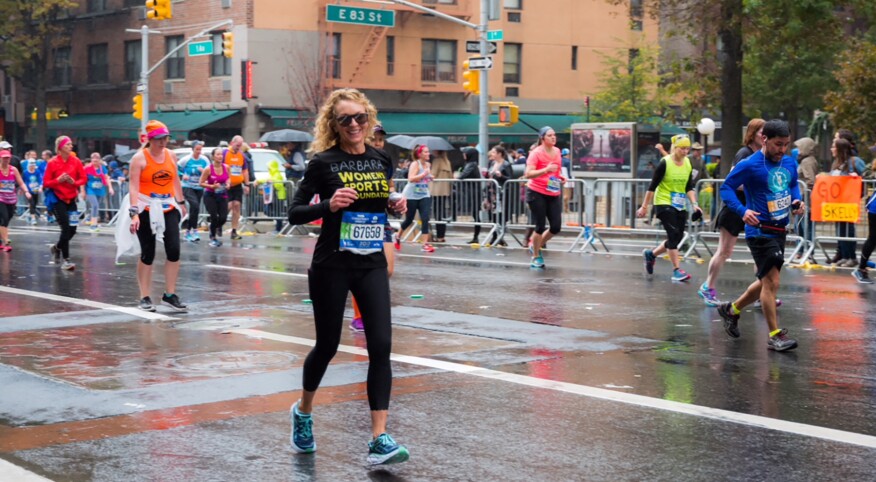I love to run.
But that wasn't always the case.
Shortly before turning 50, I went through menopause and was experiencing what I now call the “umpies” — frumpy, lumpy and oh-so-very grumpy — and knew I had to do something to get my health, weight and life back on track.
Around this time, feeling at my absolute lowest, my family and I watched runners of all shapes, sizes, fitness levels and ages compete in the New York City Marathon. I wondered how anyone could run at all, let alone run 26.2 miles. At that moment, my youngest daughter blurted out, “I want to hold up a sign that says “Go, mom, go!” Everyone looked at me, waiting for my response. “Okay,” I said.
And that's how I started running.
Running was not something I ever did willingly (except when chasing down the Mr. Softee ice cream truck as a kid in Brooklyn). Worse, I hadn't done any kind of sustained exercise since the Jane Fonda ‘feel the burn’ CDs era, and it showed.
Lucky for me, I came across a life-changing article in the Wall Street Journal about Jeff Galloway, the Olympian and marathoner who developed the Galloway Run-Walk-Run program used by hundreds of thousands of people around the world to not only run, but train for marathons.
I had just started researching and writing my first book about healthy aging, so I contacted Galloway to interview him about the program, secretly hoping he might talk me out of trying to run the NYC Marathon. Instead, he insisted that anyone who could walk could run, regardless of age or fitness level, just by following his simple method. Willing to try, I made a commitment that day and bought my first pair of running shoes (and a very cool outfit to go with them) and signed up to run in the following year's NYC Marathon.
Like many people in midlife, I was worried because I thought that running could hurt my joints. Research shows, however, that it won't, if done correctly. After 30 years of following his own program, Galloway has never had an injury. The reason is simple: It calls for gentle running (no pounding!) with scheduled walk breaks. Distance, not speed, is the goal. This way of running is easy on the joints, yet gives a high performance cardio workout, and helps build muscle mass and bone density in our legs and hips, which is crucial in the battle against osteoporosis.
As we get older, we lose muscle strength, flexibility, sense of balance, and our bones start to thin. This is especially true for women because estrogen levels drop as we go through menopause, causing bones to weaken. In fact, women can lose up to 20 percent of their bone density five to seven years after menopause, unless we actively do something about it, like running.
I took the plunge and committed myself to a regular schedule of running, knowing I had one year to get ready to run 26.2 miles. It wasn't always easy to lace up and get out the door. There were many early mornings when I wanted to hit the snooze button. But, I had made a promise to myself and to my daughters that I would run in the next NYC Marathon, which ended up being one of the best gifts I've ever given myself. Running became the foundation of my plan to age successfully and helped me lose weight, get fit, sleep better and feel happier.
If you're thinking about starting a running program, do these things first:
- Get the green light from your doctor . . . just to be sure.
- See a podiatrist to make sure you don't have any issues with your feet.
- Visit a running shoe store to get a new pair of running shoes, and break them in by walking before you start running.
- Start slowly and build up.
- Find the run/walk ratio that's right for you (mine is 60 seconds of running/20 seconds of fast walking).
I ran my first marathon on schedule and never felt more powerful than I did that day, especially when I saw my daughters cheering me on along the course. I am now a regular runner, but also a regular marathoner. In fact, I'm training to run my 7th NYC Marathon in a few months, shortly before turning 63. As I like to say, if I can do it, anyone can.








